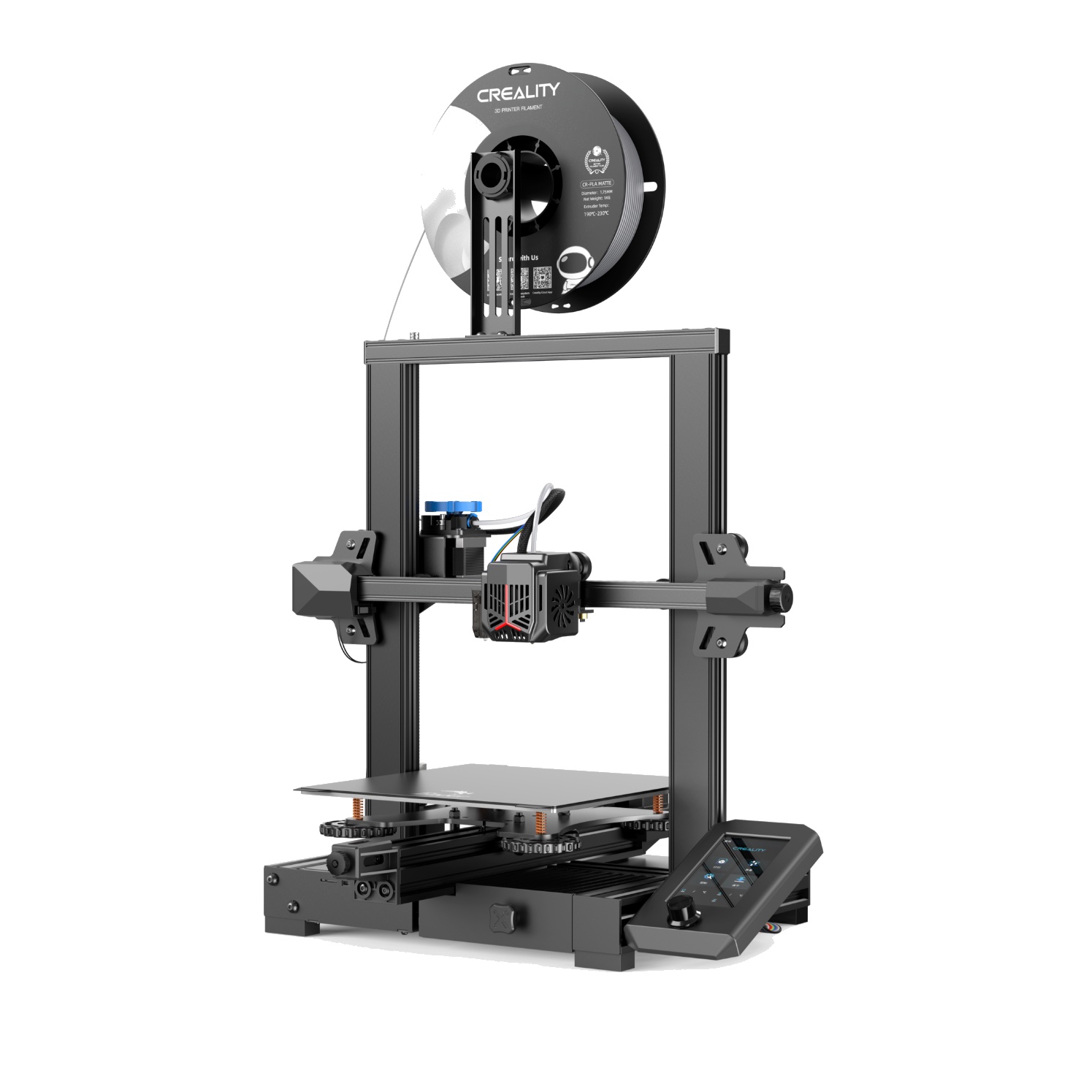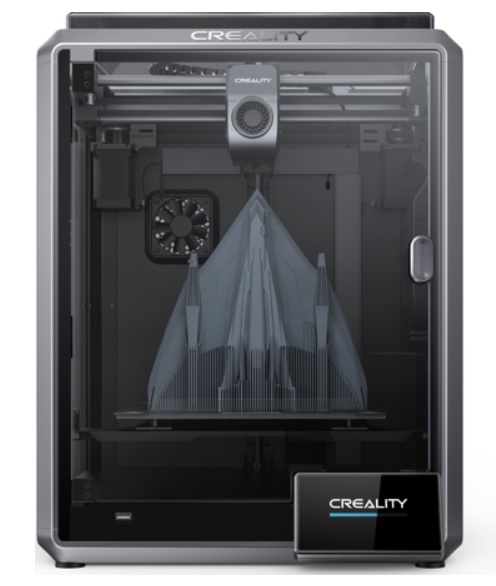Compare Ender 3 V2 Neo vs K1
Comparison between the best 3D printers
Choose the best 3D printer at the best price. The cheapest 3D printers are here.
Buy a 3D printer here with 3D Fila.
 |
 |
|
| Model | Ender 3 V2 Neo[BUY Ender 3 V2 Neo] |
K1[BUY K1] |
| Printing Material | Filament | Filament |
| Buy Filament for Creality 3D Ender 3 V2 Neo | Buy Filament forCreality 3D K1 | |
| Estimated price | $310,00 | $399,00 |
| Manufacturer | Creality 3D | Creality 3D |
| Release Year | 2022 | 2023 |
| Print Volume [mm] | 220x220x250 | 220x220x250 |
| Printer Size [mm] | 438x424x472 | 355x355x480 |
| Weight [kg] | 9,8 | 12,5 |
| Power Loss Recovery | YES | YES |
| Enclosed printer | NO | YES |
| Bed Leveling | Automatic | Automatic |
| Filament End Sensor | YES | YES |
| Bed type | Heated | Heated |
| Power supply system | Bowden | Direct Drive |
| Standard nozzle | 0,4 | 0,4 |
| Maximum Nozzle Temperature [°C] | 260 | 300 |
| Maximum Bed Temperature [°C] | 100 | 120 |
| Maximum printing speed [mm/s] | 80 | 600 |
| Filament holder | YES | YES |
| Camera for supervision | NO | NO |
| Recommended filaments | PLA, PETG | ABS, PLA, PETG, PET, TPU, PA, ABS, ASA, PC, PLA-CF, PA-CF, PET-CF |
| Recommended slicers | Cura, Simplify, Slic3r, IdeaMaker | Creality Print; Cura, Simplify3D e PrusaSlicer |
| Maximum Resolution [mm] | 0,1 | 0,1 |
| Processor | 4.2.2 mainboard | |
| Display | Display touchscreen 4,3'' | Display touchscreen 4,3'' |
| Power Supply | 110/220V / 350W | |
| Connectivity | SD / USB | Ethernet / USB / Wi-Fi |
| Operating systems | Windows, Mac, Linux | Windows, Mac, Linux |
| Date of registration in the system | 2022-12-09 | 2023-04-17 |
| Release date | 2022 | 2023 |
| Extra features | The Ender 3 V2 Neo printer stands out for its automatic bed leveling with the CR Touch system, ensuring high-quality initial layers. It features an all-metal Bowden extruder for increased durability and improved filament handling. Its flexible, PC-coated magnetic build plate makes it easy to remove prints and is durable and easy to clean. It also includes a new user interface with model preview and an updated gantry design. The Ender 3 V2 Neo maintains the same build volume and temperatures as the previous version, supporting popular filaments such as PLA and ABS. It features a quiet 32-bit mainboard and additional features such as a filament sensor, print recovery, simple 3-step assembly, an integrated toolbox, and belt tensioners. | The K1 is an extremely fast FDM 3D printer, reaching 600mm/s, 12 times faster than standard models. Equipped with a Core XY system and lightweight print head, it offers energy efficiency and high print quality. It stands out for its dual-gear extruder and quickly heated hotend, as well as dual cooling to prevent warping. Its robust structure ensures stability at high speed, with optimized software to speed up the printing process. |
| Support for multiple colors and materials (AMS and CFS) | NO | NO |
Notes * |
||
| Cost-benefit | 6 / 10 | 7 / 10 |
| Hardware | 2.4 / 10 | 4.2 / 10 |
| Tela | . | . |
| Print volume | 3 / 10 | 3 / 10 |
| Performance | 0 / 10 | 5 / 10 |
| [BUY Ender 3 V2 Neo] | [BUY K1] |
Conclusion |
| In comparing the Ender 3 V2 Neo and the K1, both from Creality 3D, several key factors should be considered to determine the best option based on individual needs and priorities. The Ender 3 V2 Neo, while being the more affordable choice, offers solid performance for standard 3D printing projects. It features reliable automatic bed leveling, a sturdy Bowden extruder system, and a user-friendly interface. It is well-suited for beginners and those looking to print with commonly used materials like PLA and PETG. However, its slower printing speed and limited temperature capabilities compared to the K1 may be drawbacks for users seeking high-speed printing or working with a broader range of advanced filaments. On the other hand, the K1 is designed for speed and versatility, boasting an impressive maximum printing speed that is significantly faster than standard models. Its direct drive system and dual-gear extruder allow for better handling of a wider array of filaments, making it ideal for more experienced users or those who require high-quality prints with complex materials. The K1's enclosed design also adds an element of safety and stability when printing at high speeds. Ultimately, the choice between these two models should align with the user's specific printing needs. For those prioritizing cost-effectiveness and reliability for basic prints, the Ender 3 V2 Neo emerges as a strong candidate. Conversely, for users focused on performance and speed for more technical projects, the K1 justifies its higher price with enhanced capabilities. Thus, if budget allows and high-speed performance is a critical factor, the K1 stands out as the superior option; if not, the Ender 3 V2 Neo provides excellent value for standard 3D printing tasks. |

